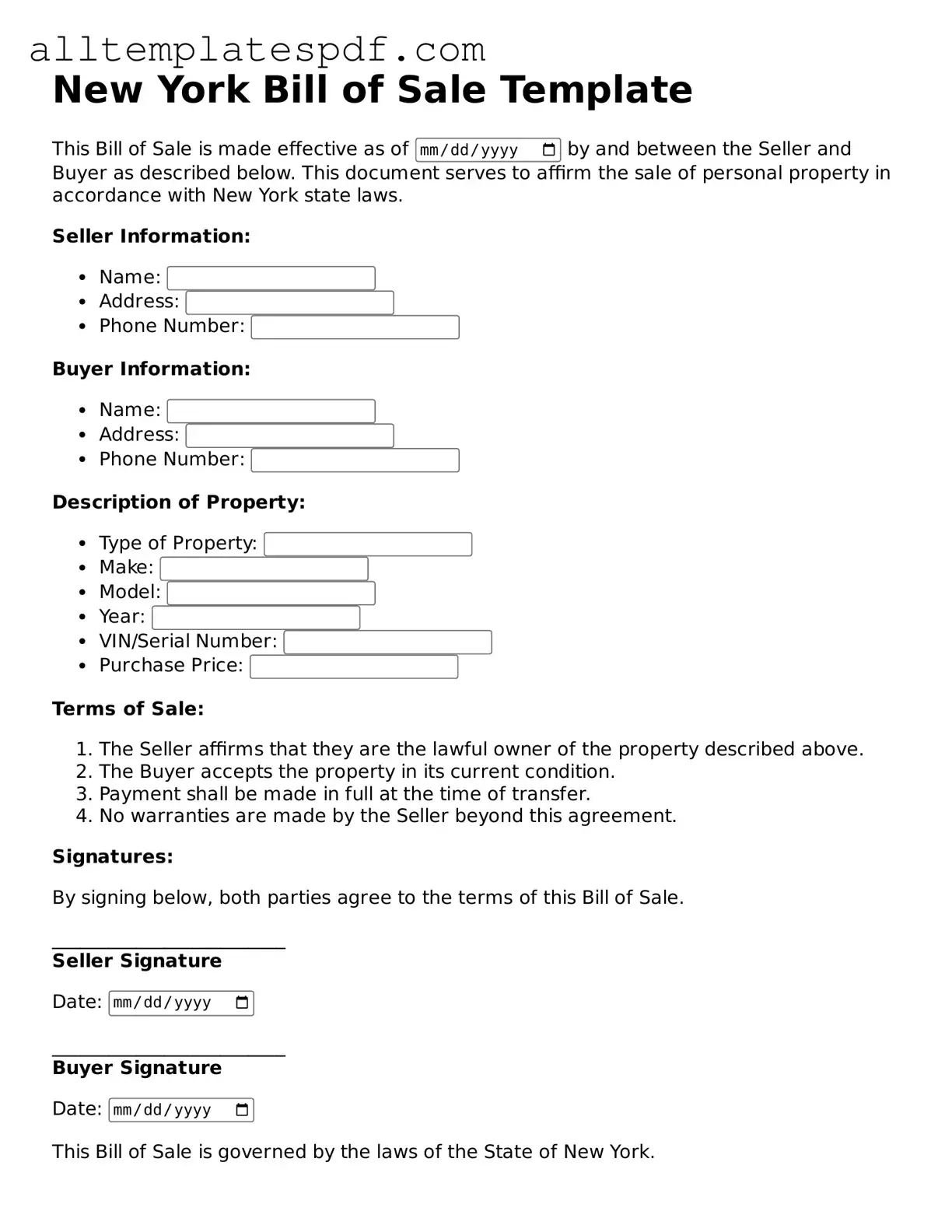When completing the New York Bill of Sale form, individuals often make several common mistakes that can lead to complications. One frequent error is failing to include all necessary details about the item being sold. This includes the item’s description, condition, and any identifying information, such as a Vehicle Identification Number (VIN) for cars. Omitting this information can create confusion or disputes later.
Another mistake is not providing accurate seller and buyer information. Both parties must include their full names and addresses. If this information is incomplete or incorrect, it may complicate future transactions or legal matters. Ensuring that all personal details are accurate is crucial for a valid Bill of Sale.
People also often overlook the importance of signatures. Both the seller and buyer must sign the document for it to be legally binding. Without these signatures, the Bill of Sale may not hold up in court if any issues arise. It is essential to verify that both parties have signed the form before finalizing the transaction.
Not keeping a copy of the completed Bill of Sale is another mistake. After signing, both parties should retain a copy for their records. This document serves as proof of the transaction and can be important for tax purposes or if disputes arise later. Failing to keep a copy can lead to difficulties in the future.
Finally, individuals sometimes neglect to date the Bill of Sale. The date is critical as it marks when the ownership of the item was transferred. Without a date, it may be challenging to establish timelines for any potential legal issues or claims. Always ensure the date is included and clearly visible on the form.
